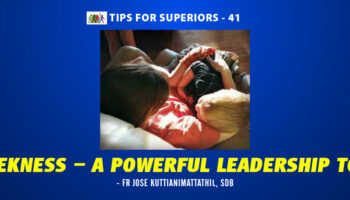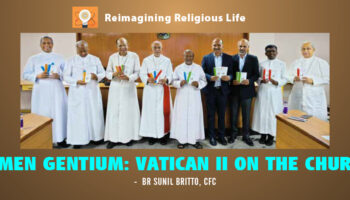The saints speak about it, the Buddhists speak about it, most major religions, spiritual movements and even scientific studies tell us how beneficial it is for the spiritual, mental and physical health….
Yes, but….. Yes, but we still often go through this half-hour or so hoping it’ll pass soon. While at it, we find our mind helplessly carried away by the tides of feelings, thoughts, preoccupations, boredom, sexual urges or fantasies.
If we are ‘lucky’, we put into practice Jesus’ invitation to go to Him and rest. Even St Therese of the Child Jesus struggled to keep awake during meditation. She even had to handle her growing annoyance at a sister who kept on loudly fingering her rosary?
Is there any way to make meditation more appealing, more beneficial? Is it possible to sit for twenty or thirty minutes in a happily energizing quiet way?
Sometime ago, I had the opportunity to see a video clip of Yongey Mingyur Rinpoche. This forty-two-year-old Buddhist master from Nepal says that from a young age he struggled with panic disorder. When he was nine, he asked his father, a Buddhist master, to teach him how to meditate. He hoped in this way to solve his panic attacks. Mingyur says that he found his father’s teaching very helpful. He also found that, though he “loved the idea of meditation, he did not like the practice of meditation.” Sounds familiar? He went on for some more time learning about meditation from different masters. Although he found the learning good, he still would not apply it to his life. At thirteen, he decided to participate in a three-year retreat. In the first year, his panic disorder grew worse. He finally asked himself, “Do you really want to apply the meditation technique or go on unhappily for the remaining two years of the retreat?” This is when he finally started living the teaching he had received by using his panic as support for his meditation. Mingyur got rid of his panic disorder and went on to become a meditation master.
Mingyur Rinpoche explains that meditation is about becoming familiar with our mind, or, in other words, befriending it. He compares the mind to a monkey that constantly needs to be on the move. According to him, our difficulty in meditating is the result of two wrong attitudes. The first is to let our mind be the boss and carry us wherever it goes. The second is to fight the ‘monkey’ aggressively, resulting in the monkey’s increasing loudness within. So, in Mingyur’s words, meditation is about finding a common ground with the ‘monkey mind’, that is, to choose the work that will occupy the ‘monkey’ and thus allow us to be masters of our mind. What work can we possibly give to the mind so that the ‘rest of us’ can grow calm, peaceful and connected with God? One of Mingyur’s suggestions for basic meditation is the breath awareness. But more on this next time.
I leave you with the very crucial question that this Buddhist monk asked himself: Do you really want to meditate?
If you are interested, there are lots of videos on meditation on Youtube. You can also learn from teachers who teach meditation.
I suggest you learn to notice what happens inside you when you meditate. Who does the talking? You will make interesting discoveries. More about this later
– Sr. Marie Gabrielle Riopel SCSM is the provincial of the Sisters of Charity of Saint Mary.
To subscribe to the magazine Contact Us





